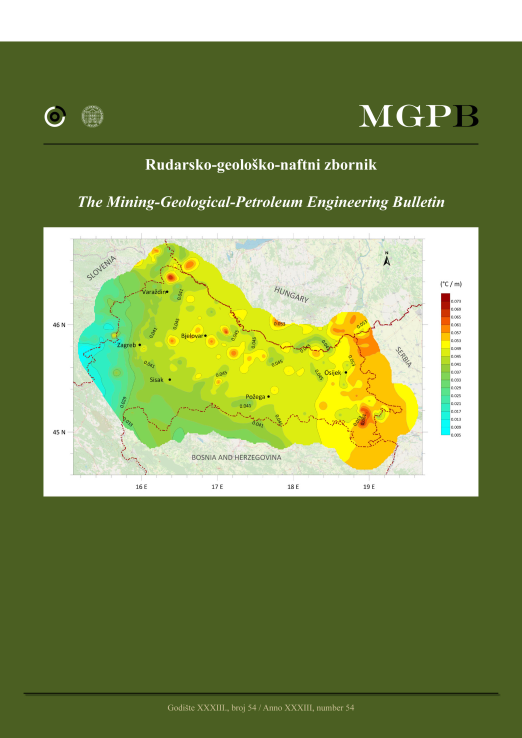Modelling-friendly life cycle inventory of underground mining of bauxite: A case study from Jajce mines in Bosnia and Herzegovina
DOI:
https://doi.org/10.17794/rgn.2021.3.5Keywords:
life cycle inventory, LCI, bauxite, mining method, emission factorsAbstract
The objective of this paper is the study of the life cycle inventory (LCI) for underground mining of small, clustered deposits of Dinaric Alps-type bauxites, mined in the mountains near Jajce, a town in Bosnia and Herzegovina, in the period 2010-2020. Modelling of the life cycle inventory was done based on the company’s internal reports and project documentation for a variant of the sublevel caving method that is using drilling and blasting. Four mines, located on three exploitation fields, were found in different phases of mine life, different levels of tectonic disturbances and different types of energy: diesel, electricity, compressed air. The main results of this study are the inventory of underground bauxite exploitation made based on long-term data, the life cycle of one bauxite deposit, and the emission factors from blasting. Underground mining in this case proved to be energy intensive: An average of 52-92 MJ/t was required (as opposed to 37 MJ/t for surface bauxite exploitation in Italy). At the same time, underground bauxite exploitation caused only 5.6-6.4% of the transformation of natural land that is above mines and deposits. The operations relying on diesel fuel caused local emissions in air and underground. The operation relying on electricity for DC locomotive and generation of the compressed air were without local emission into the air, although energy efficiency was probably reduced using compressed air as mechanical energy. At the state level, impacts depend on the country’s energy mix, which is still quite dependent on fossil fuels. Engineering estimates of blasting emissions indicated detonators and ammonium nitrate explosives as a potentially important source of environmental impacts. The mining industry would benefit significantly from cleaner energy in electricity generation (energy sector) in Bosnia and Herzegovina. The path of air emissions in the underground system, especially lead and nitrogen compounds, needs to be further explored.
Downloads
Published
How to Cite
Issue
Section
License
Copyright (c) 2021 authors and journal

This work is licensed under a Creative Commons Attribution 4.0 International License.
Creative Commons-BY
Authors who publish with this journal agree to the following terms:
In agreeing this form, you certify that:
- You read the ethical codex of the RGN zbornik available at journal web.
- You submitted work is your original work, and has not previously been published and does not include any form of plagiarism.
- You own copyright in the submitted work, and are therefore permitted to assign the licence to publish to RGN zbornik.
- Your submitted work contains no violation of any existing copyright or other third party right or any material of an obscene, libellous or otherwise unlawful nature.
- You have obtained permission for and acknowledged the source of any illustrations, diagrams or other material included in the work of which you are not the copyright owner.
- You have taken due care to ensure the accuracy of the work, and that, to the best of your knowledge, there are no false statements made within it.
- All co-authors of this submitted work are aware of, and in agreement with, the terms of this licence and that the submitted manuscript has been approved by these authors.
Publication licence
You retain copyright in your submitted work, according to journal license policy (CC-BY). By signing this form you agree that RGN zbornik may publish it under the publication licence. In summary the licence allows the following:
Anyone is free:
- To copy, distribute, display, and perform the work.
- To make derivative works.
Under the following conditions:
- The original author must always be given credit.
- The work may not be used for commercial purposes.
- If the work is altered, transformed, or built upon, the resulting work may only be distributed under a licence identical to this one.
Exceptions to the licence
In addition to publishing the work printed under the above licence, RGN zbornik will also enable the work to be visible online.
The journal editorial can change the licence rules anytime but it cannot retroactively restrict author(s) rights.


